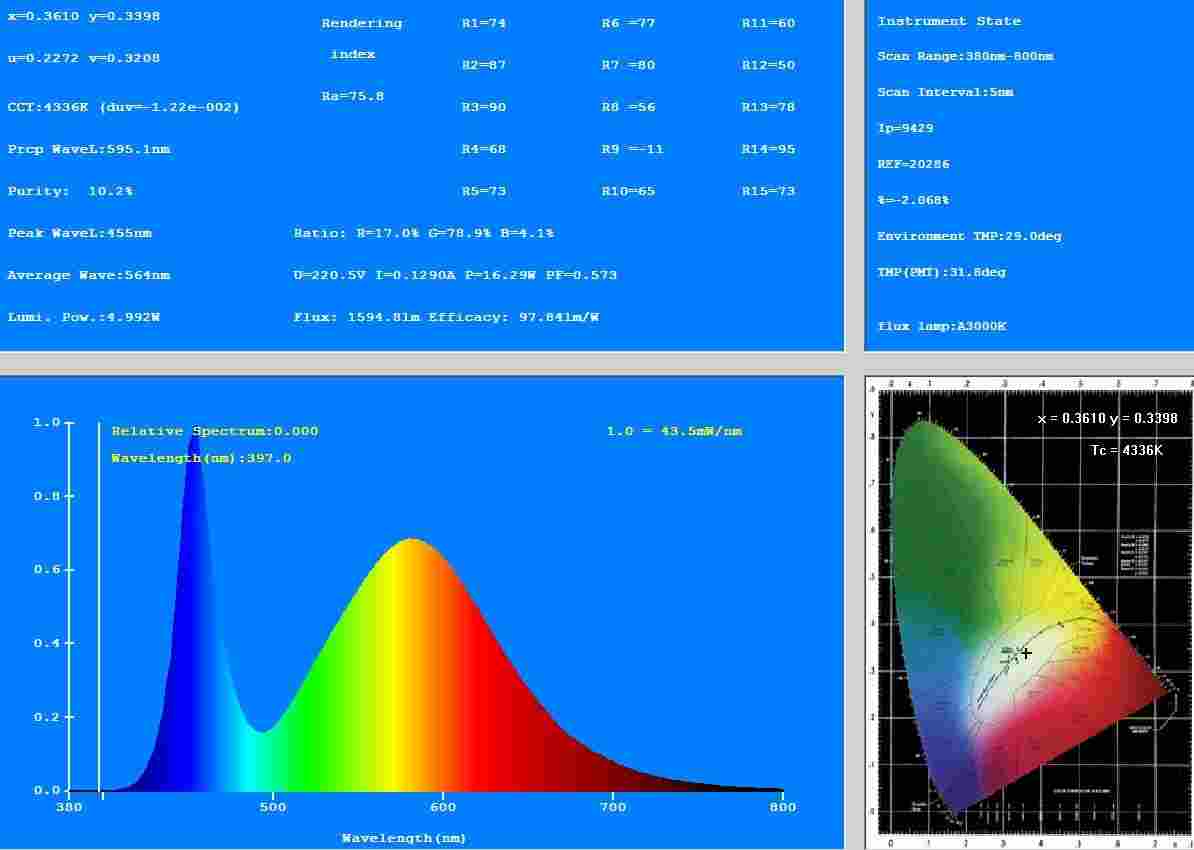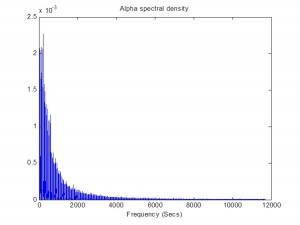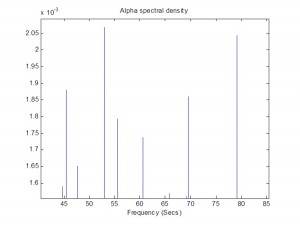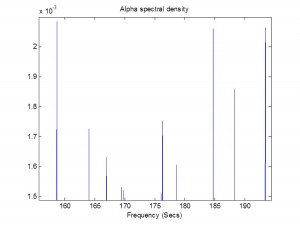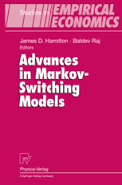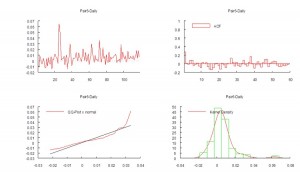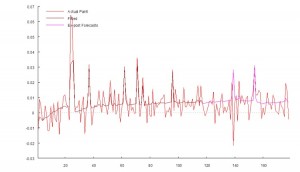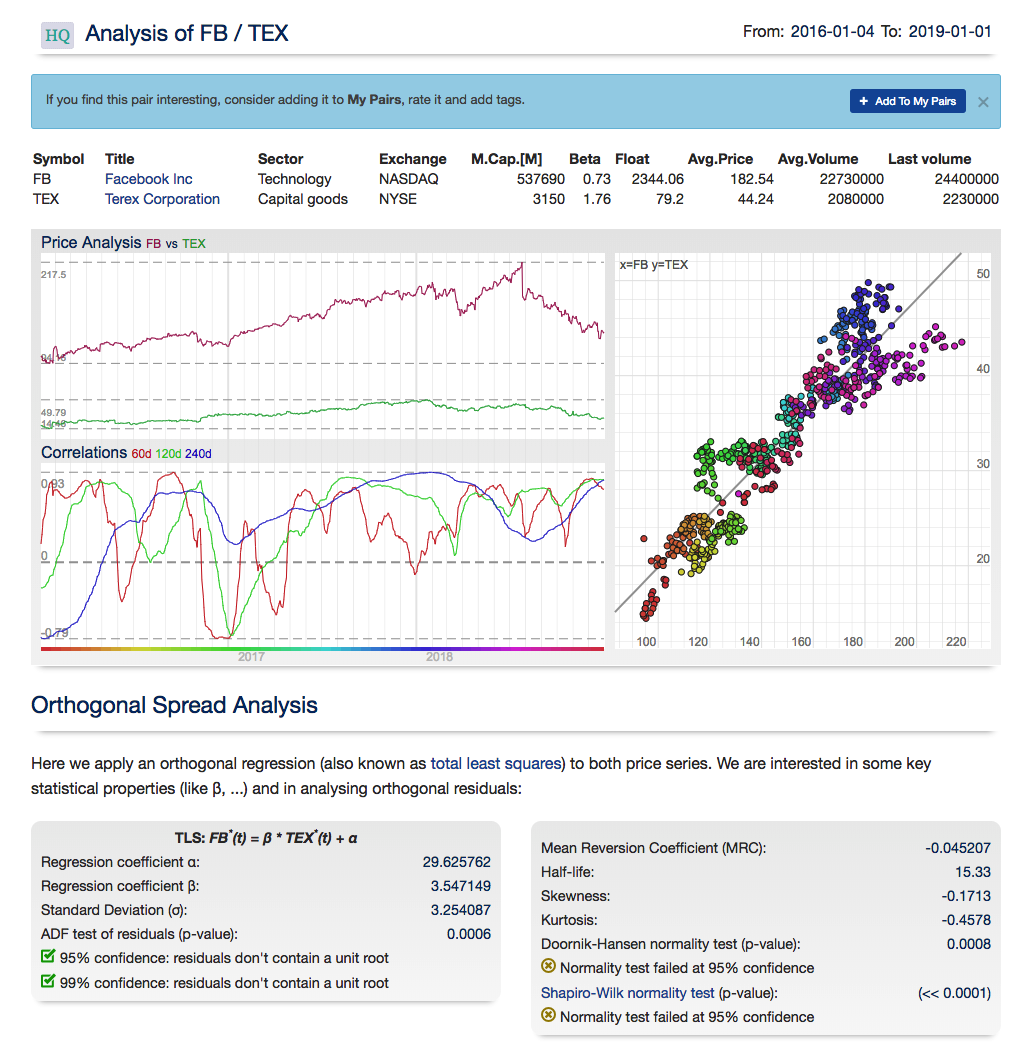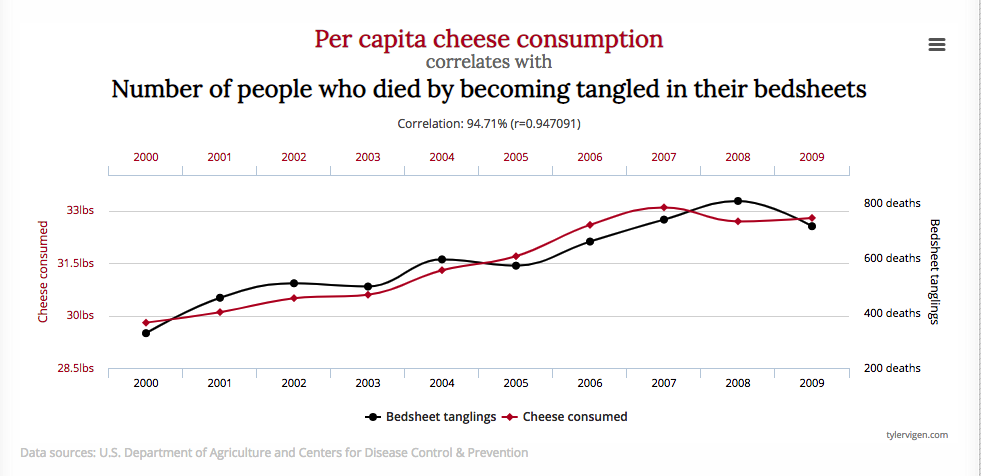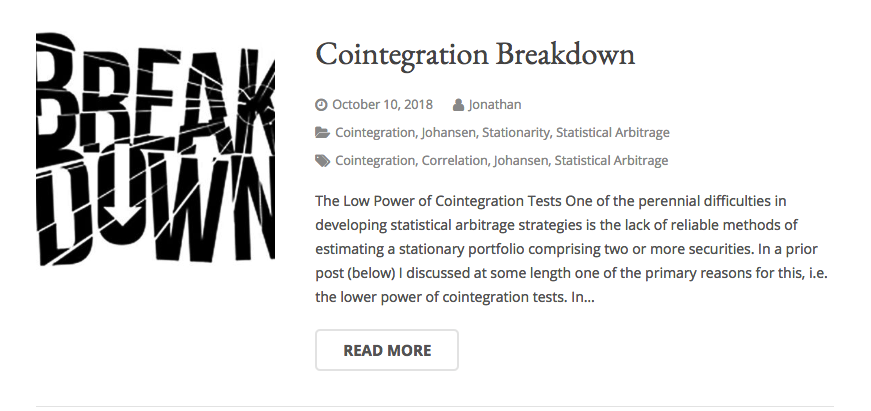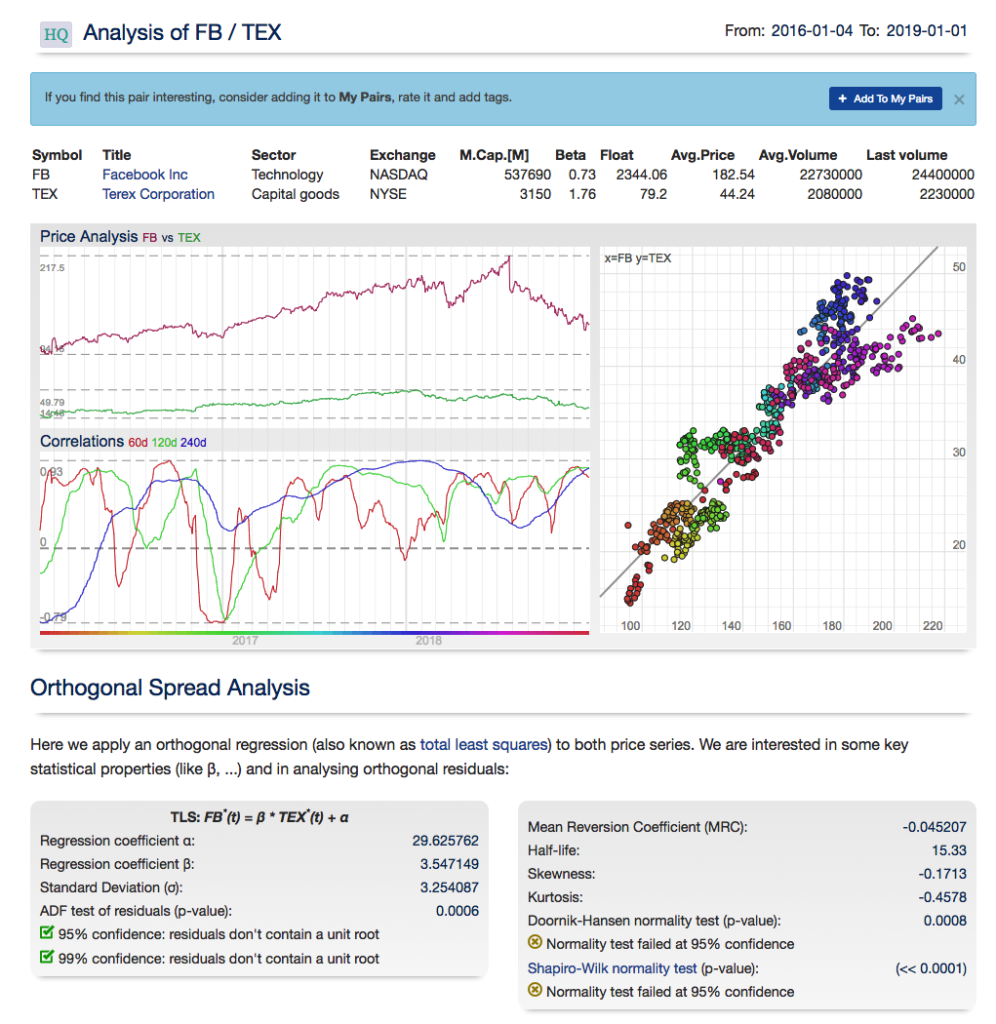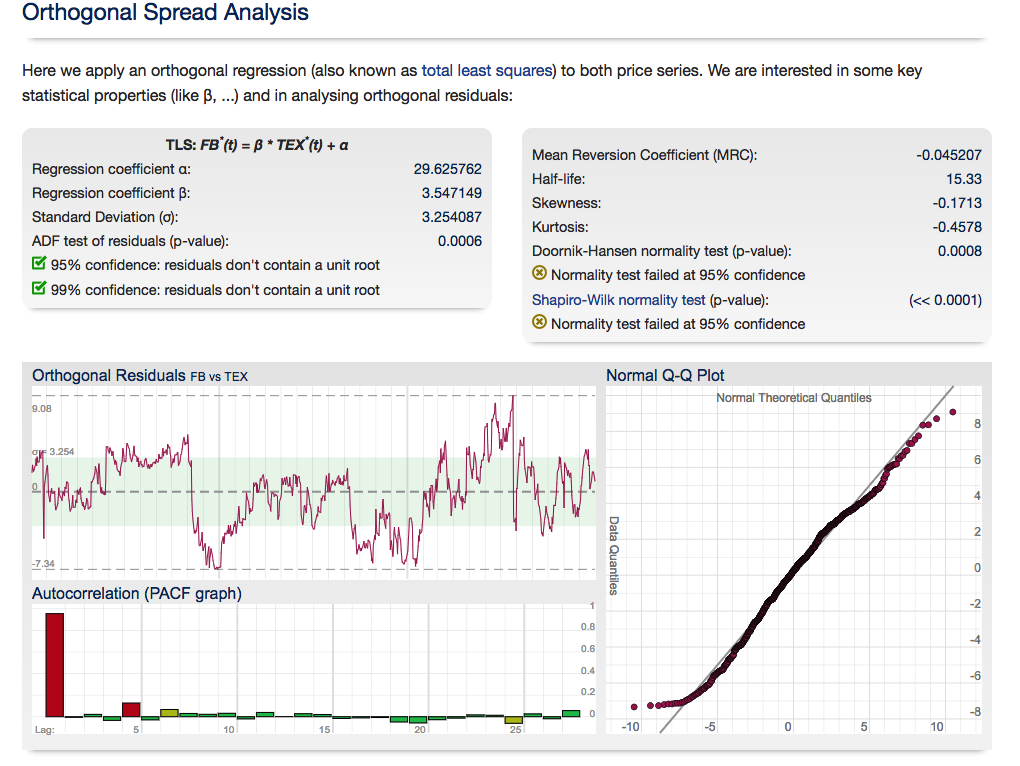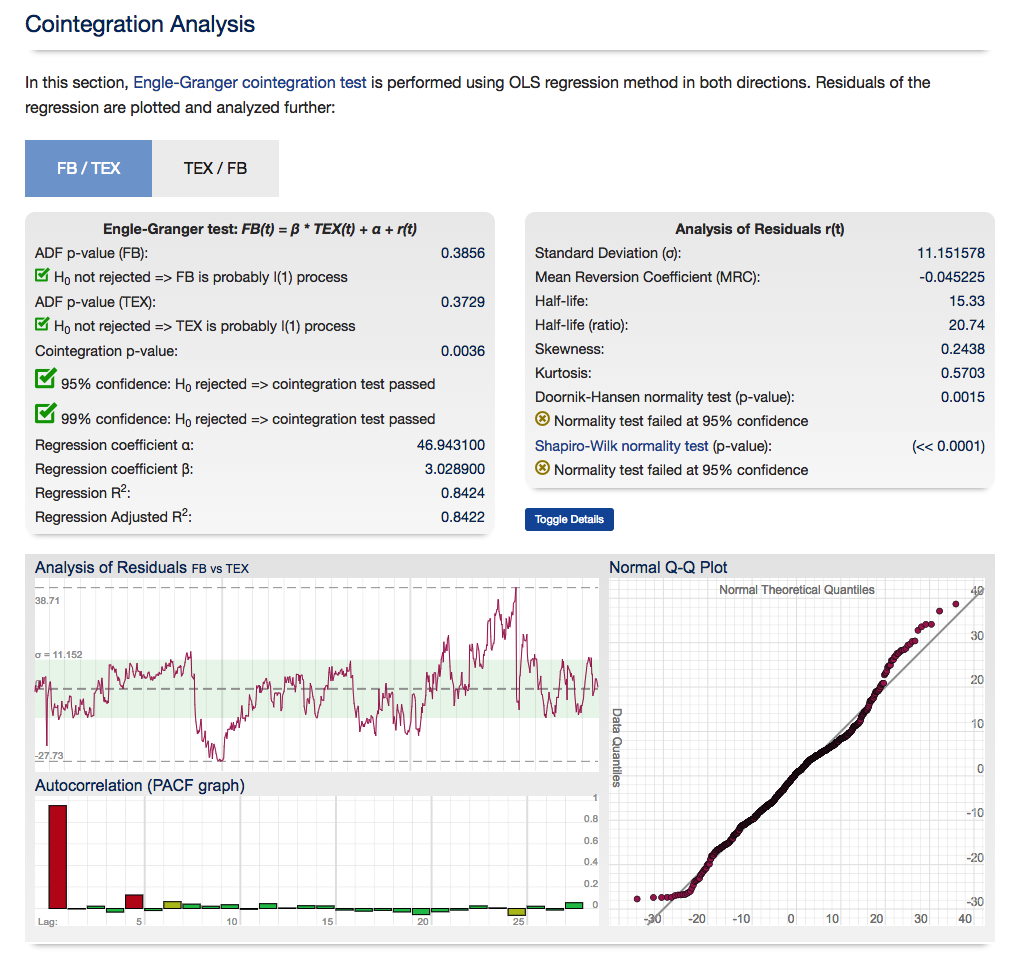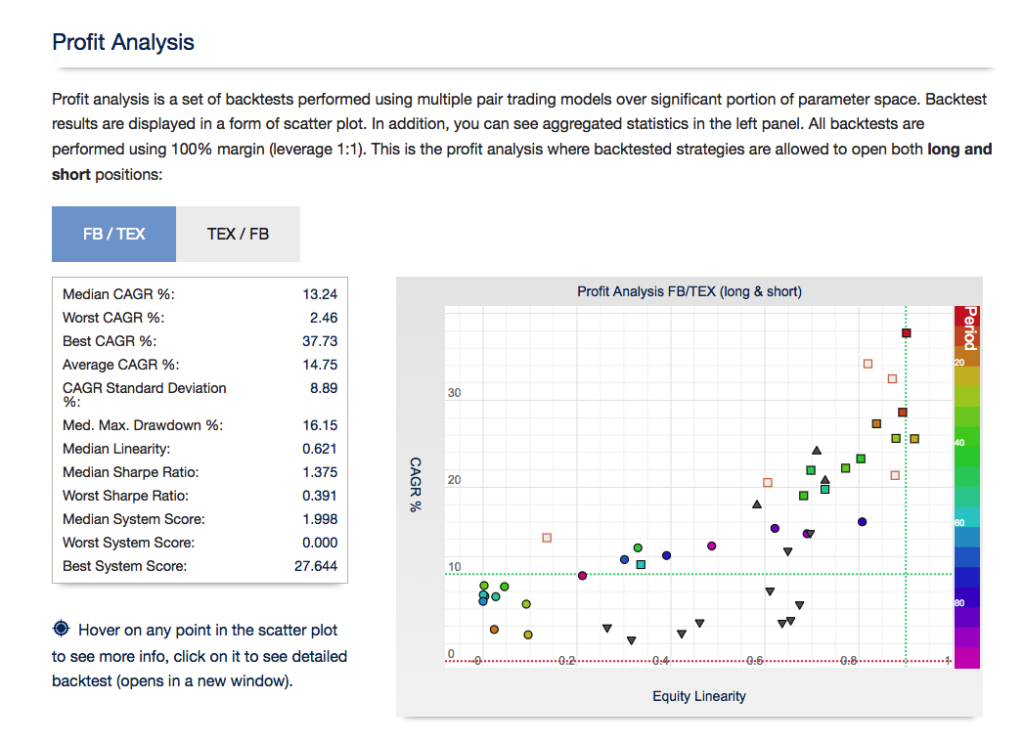High Frequency Statistical Arbitrage
High-frequency statistical arbitrage leverages sophisticated quantitative models and cutting-edge technology to exploit fleeting inefficiencies in global markets. Pioneered by hedge funds and proprietary trading firms over the last decade, the strategy identifies and capitalizes on sub-second price discrepancies across assets ranging from public equities to foreign exchange.
At its core, statistical arbitrage aims to predict short-term price movements based on probability theory and historical relationships. When implemented at high frequencies—microseconds or milliseconds—the quantitative models uncover trading opportunities unavailable to human traders. The predictive signals are then executable via automated, low-latency infrastructure.
These strategies thrive on speed. By getting pricing data faster, determining anomalies faster, and executing orders faster than the rest of the market, you expand the momentary windows to trade profitably.
Seminal papers have delved into the mathematical and technical nuances underpinning high-frequency statistical arbitrage. Zhaodong Zhong and Jian Wang’s 2014 paper develops stochastic models to quantify how market microstructure and randomness influence high-frequency trading outcomes. Samuel Wong’s 2018 research explores adapting statistical arbitrage for the nascent cryptocurrency markets.
Yet maximizing the strategy’s profitability poses an ongoing challenge. Changing market dynamics necessitate regular algorithm tweaking and infrastructure upgrades. It’s an arms race for lower latency and better predictive signals. Any edge gained disappears quickly as new firms implement similar systems. Regulatory attention also persists due to concerns over unintended impacts on market stability.
Nonetheless, high-frequency statistical arbitrage retains a crucial role for leading quant funds. Ongoing advances in machine learning, cloud computing, and execution technology promise to further empower the strategy. Though the competitive landscape grows more challenging, the cutting edge continues advancing profitably. Where human perception fails, automated high-frequency strategies recognize and seize value.
Implementing an Intraday Statistical Arbitrage Model
While HFT infrastructure and know-how are beyond the reach of most traders, it is possible to conceive of a system for pairs trading at moderate frequency, say 1-minute intervals.
We illustrate the approach with an algorithm that was originally showcased by Mathworks some years ago (but which has since slipped off the radar and is no longer available to download). I’ve amended the code to improve its efficiency, but the core idea remains the same: we conduct a rolling backtest in which data on a pair of assets, in this case spot prices of Brent Crude (LCO) and West Texas Intermediate (WTI), is subdivided into in-sample and out-of-sample periods of varying lengths. We seek to identify windows in which the price series are cointegrated in the sense of Engle-Granger and then apply the regression parameters to take long and short positions in the pair during the corresponding out-of-sample period. The idea is to trade only when there is compelling evidence of cointegration between the two series and to avoid trading at other times.
The critical part of the walk-forward analysis code is as shown below. Note we are using a function parametersweep to conduct a grid search across a range of in-sample dataset sizes to determine if the series are cointegrated (according to the Engle-Granger test) in that sub-period and, if so, determine the position size according to the regression parameters. The optimal in-sample parameters are then applied in the out-of-sample period and the performance results are recorded.
Here we are making use of Matlab’s parallelization capabilities, which work seamlessly to spread the processing load across available CPUs, handling the distribution of variables, function definitions and dependencies with ease. My experience with trying to parallelize Python, by contrast, is often a frustrating one that frequently fails at the first several attempts.


The results appear promising; however, the data is out-of-date, comes from a source that can be less than 100% reliable and may represent price quotes rather than traded prices. If we switch to 1-minute traded prices in a pair of stocks such as PEP and KO that are known to be cointegrated over long horizons, the outcome is very different:

Conclusion
High-frequency statistical arbitrage represents the convergence of cutting-edge technology and quantitative modeling to uncover fleeting trading advantages invisible to human market participants. This strategy has proven profitable for sophisticated hedge funds and prop shops, but also raises broader questions around fairness, regulation, and the future of finance.
However, the competitive edge gained from high-frequency strategies diminishes quickly as the technology diffuses across the industry. Firms must run faster just to stand still.
Continued advancement in machine learning, cloud computing, and execution infrastructure promises to expand the frontier. But practitioners and policymakers alike share responsibility for ensuring market integrity and stability amidst this technology arms race.
In conclusion, high-frequency statistical arbitrage remains essential to many leading quantitative firms, with the competitive landscape growing ever more challenging. Realizing the potential of emerging innovations, while promoting healthy markets that benefit all participants, will require both vision and wisdom. The path ahead lies between cooperation and competition, ethics and incentives. By bridging these domains, high-frequency strategies can contribute positively to financial evolution while capturing sustainable edge.
References:
Zhong, Zhaodong, and Jian Wang. “High-Frequency Trading and Probability Theory.” (2014).
Wong, Samuel S. Y. “A High-Frequency Algorithmic Trading Strategy for Cryptocurrency.” (2018).
Glossary
For those unfamiliar with the topic of statistical arbitrage and its commonly used terms and concepts, check out my book Equity Analytics, which covers the subject matter in considerable detail.



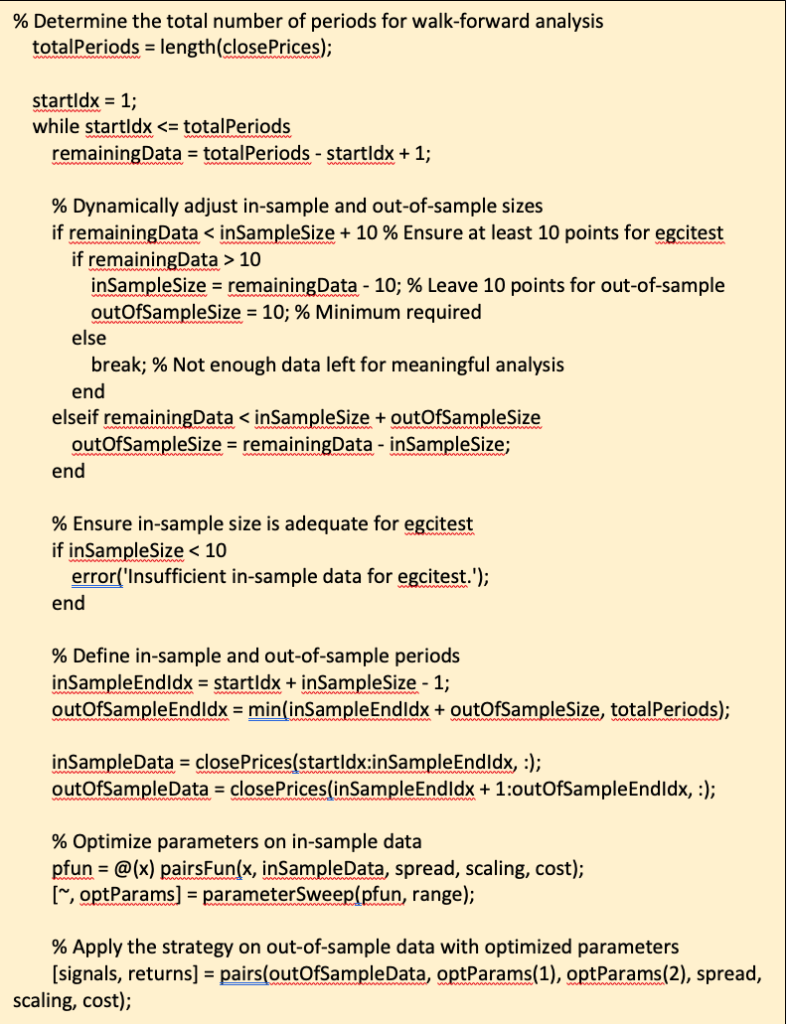

Pairs Trading in the Equities Entity Store
An extract from the chapter on pairs trading from my forthcoming book Equity Analytics
Pairs-Trading-1Statistical Arbitrage with Synthetic Data
In my last post I mapped out how one could test the reliability of a single stock strategy (for the S&P 500 Index) using synthetic data generated by the new algorithm I developed.
As this piece of research follows a similar path, I won’t repeat all those details here. The key point addressed in this post is that not only are we able to generate consistent open/high/low/close prices for individual stocks, we can do so in a way that preserves the correlations between related securities. In other words, the algorithm not only replicates the time series properties of individual stocks, but also the cross-sectional relationships between them. This has important applications for the development of portfolio strategies and portfolio risk management.
KO-PEP Pair
To illustrate this I will use synthetic daily data to develop a pairs trading strategy for the KO-PEP pair.

The two price series are highly correlated, which potentially makes them a suitable candidate for a pairs trading strategy.

There are numerous ways to trade a pairs spread such as dollar neutral or beta neutral, but in this example I am simply going to look at trading the price difference. This is not a true market neutral approach, nor is the price difference reliably stationary. However, it will serve the purpose of illustrating the methodology.

Obviously it is crucial that the synthetic series we create behave in a way that replicates the relationship between the two stocks, so that we can use it for strategy development and testing. Ideally we would like to see high correlations between the synthetic and original price series as well as between the pairs of synthetic price data.
We begin by using the algorithm to generate 100 synthetic daily price series for KO and PEP and examine their properties.
Correlations
As we saw previously, the algorithm is able to generate synthetic data with correlations to the real price series ranging from below zero to close to 1.0:

The crucial point, however, is that the algorithm has been designed to also preserve the cross-sectional correlation between the pairs of synthetic KO-PEP data, just as in the real data series:

Some examples of highly correlated pairs of synthetic data are shown in the plots below:


In addition to correlation, we might also want to consider the price differences between the pairs of synthetic series, since the strategy will be trading that price difference, in the simple approach adopted here. We could, for example, select synthetic pairs for which the divergence in the price difference does not become too large, on the assumption that the series difference is stationary. While that approach might well be reasonable in other situations, here an assumption of stationarity would be perhaps closer to wishful thinking than reality. Instead we can use of selection of synthetic pairs with high levels of cross-correlation, as we all high levels of correlation with the real price data. We can also select for high correlation between the price differences for the real and synthetic price series.
Strategy Development & WFO Testing
Once again we follow the procedure for strategy development outline in the previous post, except that, in addition to a selection of synthetic price difference series we also include 14-day correlations between the pairs. We use synthetic daily synthetic data from 1999 to 2012 to build the strategy and use the data from 2013 onwards for testing/validation. Eventually, after 50 generations we arrive at the result shown in the figure below:

As before, the equity curve for the individual synthetic pairs are shown towards the bottom of the chart, while the aggregate equity curve, which is a composition of the results for all none synthetic pairs is shown above in green. Clearly the results appear encouraging.
As a final step we apply the WFO analysis procedure described in the previous post to test the performance of the strategy on the real data series, using a variable number in-sample and out-of-sample periods of differing size. The results of the WFO cluster test are as follows:

The results are no so unequivocal as for the strategy developed for the S&P 500 index, but would nonethless be regarded as acceptable, since the strategy passes the great majority of the tests (in addition to the tests on synthetic pairs data).
The final results appear as follows:


Conclusion
We have demonstrated how the algorithm can be used to generate synthetic price series the preserve not only the important time series properties, but also the cross-sectional properties between series for correlated securities. This important feature has applications in the development of statistical arbitrage strategies, portfolio construction methodology and in portfolio risk management.
Machine Learning Based Statistical Arbitrage
Previous Posts
I have written extensively about statistical arbitrage strategies in previous posts, for example:
Applying Machine Learning in Statistical Arbitrage
In this series of posts I want to focus on applications of machine learning in stat arb and pairs trading, including genetic algorithms, deep neural networks and reinforcement learning.
Pair Selection
Let’s begin with the subject of pairs selection, to set the scene. The way this is typically handled is by looking at historical correlations and cointegration in a large universe of pairs. But there are serious issues with this approach, as described in this post:
Instead I use a metric that I call the correlation signal, which I find to be a more reliable indicator of co-movement in the underlying asset processes. I wont delve into the details here, but you can get the gist from the following:

The search algorithm considers pairs in the S&P 500 membership and ranks them in descending order of correlation information. Pairs with the highest values (typically of the order of 100, or greater) tend to be variants of the same underlying stock, such as GOOG vs GOOGL, which is an indication that the metric “works” (albeit that such pairs offer few opportunities at low frequency). The pair we are considering here has a correlation signal value of around 14, which is also very high indeed.
Trading Strategy Development
We begin by collecting five years of returns series for the two stocks:

The first approach we’ll consider is the unadjusted spread, being the difference in returns between the two series, from which we crate a normalized spread “price”, as follows.

This methodology is frowned upon as the resultant spread is unlikely to be stationary, as you can see for this example in the above chart. But it does have one major advantage in terms of implementation: the same dollar value is invested in both long and short legs of the spread, making it the most efficient approach in terms of margin utilization and capital cost – other approaches entail incurring an imbalance in the dollar value of the two legs.
But back to nonstationarity. The problem is that our spread price series looks like any other asset price process – it trends over long periods and tends to wander arbitrarily far from its starting point. This is NOT the outcome that most statistical arbitrageurs are looking to achieve. On the contrary, what they want to see is a stationary process that will tend to revert to its mean value whenever it moves too far in one direction.
Still, this doesn’t necessarily determine that this approach is without merit. Indeed, it is a very typical trading strategy amongst futures traders for example, who are often looking for just such behavior in their trend-following strategies. Their argument would be that futures spreads (which are often constructed like this) exhibit clearer, longer lasting and more durable trends than in the underlying futures contracts, with lower volatility and market risk, due to the offsetting positions in the two legs. The argument has merit, no doubt. That said, spreads of this kind can nonetheless be extremely volatile.
So how do we trade such a spread? One idea is to add machine learning into the mix and build trading systems that will seek to capitalize on long term trends. We can do that in several ways, one of which is to apply genetic programming techniques to generate potential strategies that we can backtest and evaluate. For more detail on the methodology, see:
I built an entire hedge fund using this approach in the early 2000’s (when machine learning was entirely unknown to the general investing public). These days there are some excellent software applications for generating trading systems and I particularly like Mike Bryant’s Adaptrade Builder, which was used to create the strategies shown below:
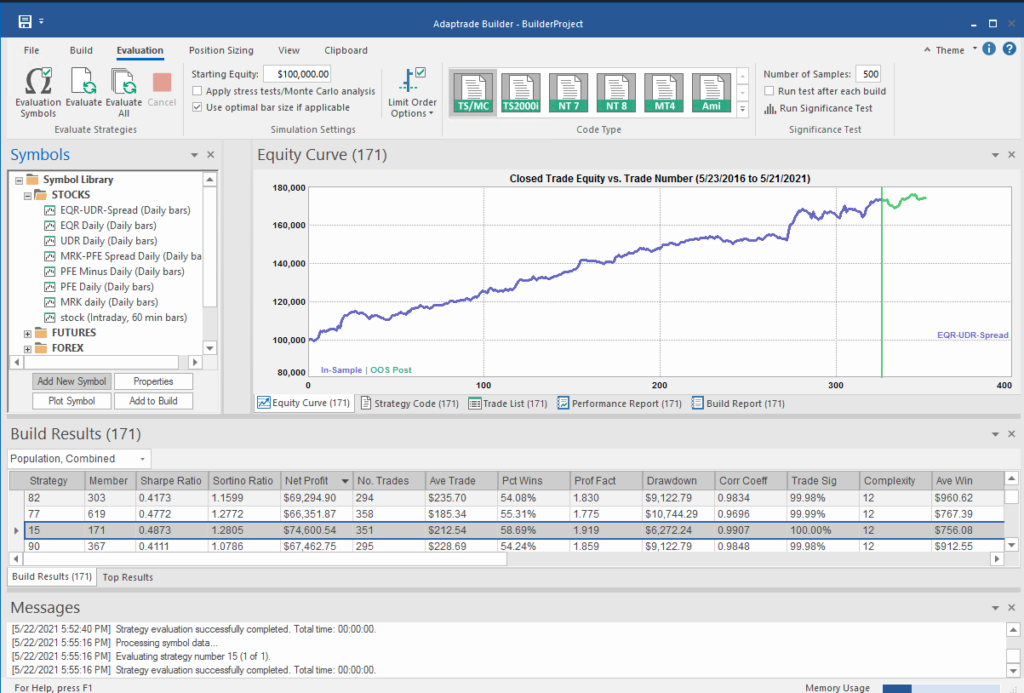
Builder has no difficulty finding strategies that produce a smooth equity curve, with decent returns, low drawdowns and acceptable Sharpe Ratios and Profit Factors – at least in backtest! Of course, there is a way to go here in terms of evaluating such strategies and proving their robustness. But it’s an excellent starting point for further R&D.
But let’s move on to consider the “standard model” for pairs trading. The way this works is that we consider a linear model of the form
Y(t) = beta * X(t) + e(t)
Where Y(t) is the returns series for stock 1, X(t) is the returns series in stock 2, e(t) is a stationary random error process and beta (is this model) is a constant that expresses the linear relationship between the two asset processes. The idea is that we can form a spread process that is stationary:
Y(t) – beta * X(t) = e(t)
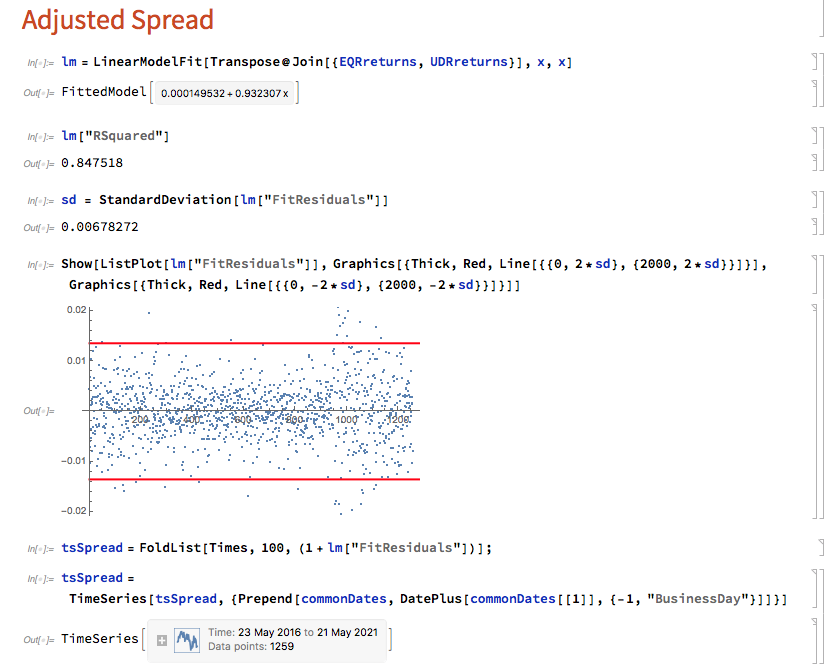
In this case we estimate beta by linear regression to be 0.93. The residual spread process has a mean very close to zero, and the spread price process remains within a range, which means that we can buy it when it gets too low, or sell it when it becomes too high, in the expectation that it will revert to the mean:
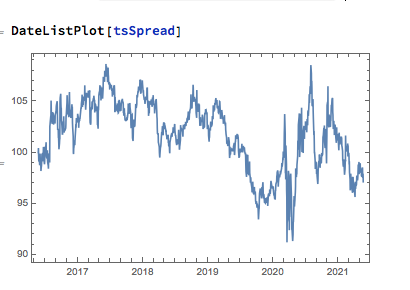
In this approach, “buying the spread” means purchasing shares to the value of, say, $1M in stock 1, and selling beta * $1M of stock 2 (around $930,000). While there is a net dollar imbalance in the dollar value of the two legs, the margin impact tends to be very small indeed, while the overall portfolio is much more stable, as we have seen.
The classical procedure is to buy the spread when the spread return falls 2 standard deviations below zero, and sell the spread when it exceeds 2 standard deviations to the upside. But that leaves a lot of unanswered questions, such as:
- After you buy the spread, when should you sell it?
- Should you use a profit target?
- Where should you set a stop-loss?
- Do you increase your position when you get repeated signals to go long (or short)?
- Should you use a single, or multiple entry/exit levels?
And so on – there are a lot of strategy components to consider. Once again, we’ll let genetic programming do the heavy lifting for us:
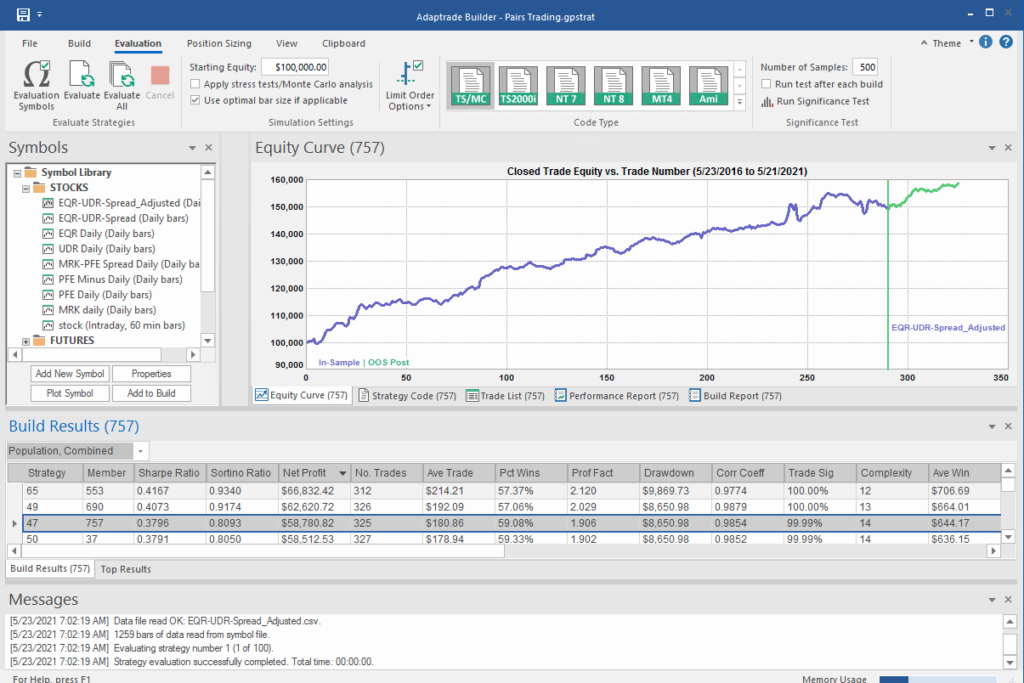
What’s interesting here is that the strategy selected by the Builder application makes use of the Bollinger Band indicator, one of the most common tools used for trading spreads, especially when stationary (although note that it prefers to use the Opening price, rather than the usual close price):
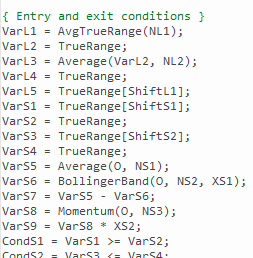
Ok so far, but in fact I cheated! I used the entire data series to estimate the beta coefficient, which is effectively feeding forward-information into our model. In reality, the data comes at us one day at a time and we are required to re-estimate the beta every day.
Let’s approximate the real-life situation by re-estimating beta, one day at a time. I am using an expanding window to do this (i.e. using the entire data series up to each day t), but is also common to use a fixed window size to give a “rolling” estimate of beta in which the latest data plays a more prominent part in the estimation. The process now looks like this:
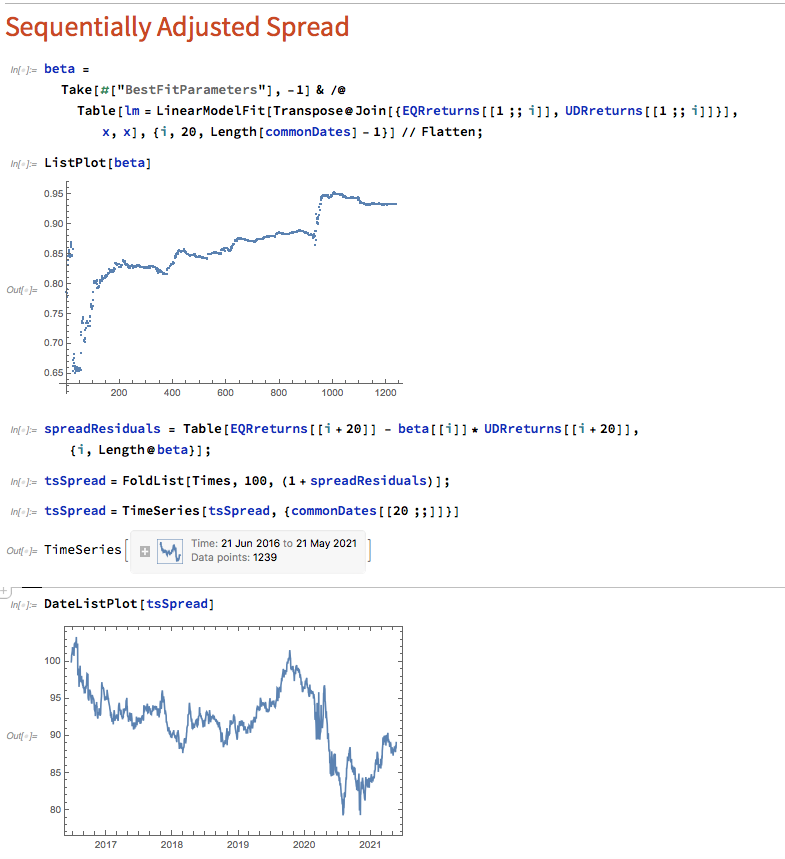
Here we use OLS to produce a revised estimate of beta on each trading day. So our model now becomes:
Y(t) = beta(t) * X(t) + e(t)
i.e. beta is now time-varying, as can be seen from the chart above.
The synthetic spread price appears to be stationary (we can test this), although perhaps not to the same degree as in the previous example, where we used the entire data series to estimate a single, constant beta. So we might anticipate that out ML algorithm would experience greater difficulty producing attractive trading models. But, not a bit of it – it turns out that we are able to produce systems that are just as high performing as before:
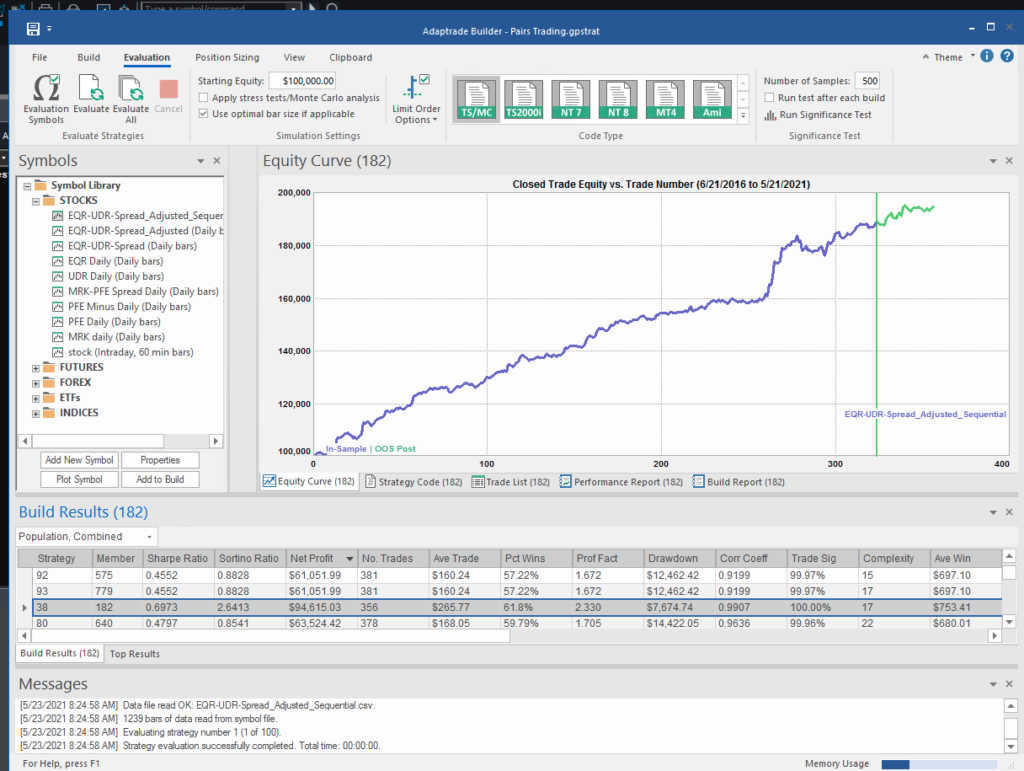
In fact this strategy has higher returns, Sharpe Ratio, Sortino Ratio and lower drawdown than many of the earlier models.
Conclusion
The purpose of this post was to show how we can combine the standard approach to statistical arbitrage, which is based on classical econometric theory, with modern machine learning algorithms, such as genetic programming. This frees us to consider a very much wider range of possible trade entry and exit strategies, beyond the rather simplistic approach adopted when pairs trading was first developed. We can deploy multiple trade entry levels and stop loss levels to manage risk, dynamically size the trade according to current market conditions and give emphasis to alternative performance characteristics such as maximum drawdown, or Sharpe or Sortino ratio, in addition to strategy profitability.
The programatic nature of the strategies developed in the way also make them very amenable to optimization, Monte Carlo simulation and stress testing.
This is but one way of adding machine learning methodologies to the mix. In a series of follow-up posts I will be looking at the role that other machine learning techniques – such as deep learning and reinforcement learning – can play in improving the performance characteristics of the classical statistical arbitrage strategy.
Alpha Spectral Analysis
One of the questions of interest is the optimal sampling frequency to use for extracting the alpha signal from an alpha generation function. We can use Fourier transforms to help identify the cyclical behavior of the strategy alpha and hence determine the best time-frames for sampling and trading. Typically, these spectral analysis techniques will highlight several different cycle lengths where the alpha signal is strongest.
The spectral density of the combined alpha signals across twelve pairs of stocks is shown in Fig. 1 below. It is clear that the strongest signals occur in the shorter frequencies with cycles of up to several hundred seconds. Focusing on the density within
this time frame, we can identify in Fig. 2 several frequency cycles where the alpha signal appears strongest. These are around 50, 80, 160, 190, and 230 seconds. The cycle with the strongest signal appears to be around 228 secs, as illustrated in Fig. 3. The signals at cycles of 54 & 80 (Fig. 4), and 158 & 185/195 (Fig. 5) secs appear to be of approximately equal strength.
There is some variation in the individual pattern for of the power spectra for each pair, but the findings are broadly comparable, and indicate that strategies should be designed for sampling frequencies at around these time intervals.
Fig. 1 Alpha Power Spectrum
Fig.2
PRINCIPAL COMPONENTS ANALYSIS OF ALPHA POWER SPECTRUM
If we look at the correlation surface of the power spectra of the twelve pairs some clear patterns emerge (see Fig 6):
Focusing on the off-diagonal elements, it is clear that the power spectrum of each pair is perfectly correlated with the power spectrum of its conjugate. So, for instance the power spectrum of the Stock1-Stock3 pair is exactly correlated with the spectrum for its converse, Stock3-Stock1.
But it is also clear that there are many other significant correlations between non-conjugate pairs. For example, the correlation between the power spectra for Stock1-Stock2 vs Stock2-Stock3 is 0.72, while the correlation of the power spectra of Stock1-Stock2 and Stock2-Stock4 is 0.69.
We can further analyze the alpha power spectrum using PCA to expose the underlying factor structure. As shown in Fig. 7, the first two principal components account for around 87% of the variance in the alpha power spectrum, and the first four components account for over 98% of the total variation.
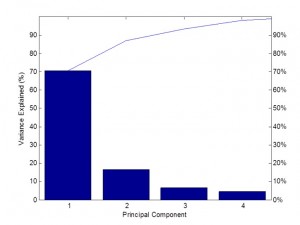
Fig. 7
Stock3 dominates PC-1 with loadings of 0.52 for Stock3-Stock4, 0.64 for Stock3-Stock2, 0.29 for Stock1-Stock3 and 0.26 for Stock4-Stock3. Stock3 is also highly influential in PC-2 with loadings of -0.64 for Stock3-Stock4 and 0.67 for Stock3-Stock2 and again in PC-3 with a loading of -0.60 for Stock3-Stock1. Stock4 plays a major role in the makeup of PC-3, with the highest loading of 0.74 for Stock4-Stock2.
Fig. 8 PCA Analysis of Power Spectra
A Practical Application of Regime Switching Models to Pairs Trading
In the previous post I outlined some of the available techniques used for modeling market states. The following is an illustration of how these techniques can be applied in practice. You can download this post in pdf format here.
The chart below shows the daily compounded returns for a single pair in an ETF statistical arbitrage strategy, back-tested over a 1-year period from April 2010 to March 2011.
The idea is to examine the characteristics of the returns process and assess its predictability.
The initial impression given by the analytics plots of daily returns, shown in Fig 2 below, is that the process may be somewhat predictable, given what appears to be a significant 1-order lag in the autocorrelation spectrum. We also see evidence of the
customary non-Gaussian “fat-tailed” distribution in the error process.
An initial attempt to fit a standard Auto-Regressive Moving Average ARMA(1,0,1) model yields disappointing results, with an unadjusted model R-squared of only 7% (see model output in Appendix 1)
However, by fitting a 2-state Markov model we are able to explain as much as 65% in the variation in the returns process (see Appendix II).
The model estimates Markov Transition Probabilities as follows.
P(.|1) P(.|2)
P(1|.) 0.93920 0.69781
P(2|.) 0.060802 0.30219
In other words, the process spends most of the time in State 1, switching to State 2 around once a month, as illustrated in Fig 3 below.
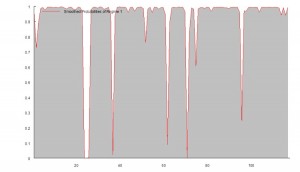
In the first state, the pairs model produces an expected daily return of around 65bp, with a standard deviation of similar magnitude. In this state, the process also exhibits very significant auto-regressive and moving average features.
Regime 1:
Intercept 0.00648 0.0009 7.2 0
AR1 0.92569 0.01897 48.797 0
MA1 -0.96264 0.02111 -45.601 0
Error Variance^(1/2) 0.00666 0.0007
In the second state, the pairs model produces lower average returns, and with much greater variability, while the autoregressive and moving average terms are poorly determined.
Regime 2:
Intercept 0.03554 0.04778 0.744 0.459
AR1 0.79349 0.06418 12.364 0
MA1 -0.76904 0.51601 -1.49 0.139
Error Variance^(1/2) 0.01819 0.0031
CONCLUSION
The analysis in Appendix II suggests that the residual process is stable and Gaussian. In other words, the two-state Markov model is able to account for the non-Normality of the returns process and extract the salient autoregressive and moving average features in a way that makes economic sense.
How is this information useful? Potentially in two ways:
(i) If the market state can be forecast successfully, we can use that information to increase our capital allocation during periods when the process is predicted to be in State 1, and reduce the allocation at times when it is in State 2.
(ii) By examining the timing of the Markov states and considering different features of the market during the contrasting periods, we might be able to identify additional explanatory factors that could be used to further enhance the trading model.
Why Statistical Arbitrage Breaks Down
An extract from my book, Quantitative Research and Trading, to be published in 2019.
Why Statistical Arbitrage Trades Break Down
Pairs Trading with Copulas
Introduction
In a previous post, Copulas in Risk Management, I covered in detail the theory and applications of copulas in the area of risk management, pointing out the potential benefits of the approach and how it could be used to improve estimates of Value-at-Risk by incorporating important empirical features of asset processes, such as asymmetric correlation and heavy tails.
In this post I will take a very different tack, demonstrating how copula models have potential applications in trading strategy design, in particular in pairs trading and statistical arbitrage strategies.
This is not a new concept – in fact the idea occurred to me (and others) many years ago, when copulas began to be widely adopted in financial engineering, risk management and credit derivatives modeling. But it remains relatively under-explored compared to more traditional techniques in this field. Fresh research suggests that it may be a useful adjunct to the more common methods applied in pairs trading, and may even be a more robust methodology altogether, as we shall see.
Recommended Background Reading
http://jonathankinlay.com/2017/01/copulas-risk-management/
http://jonathankinlay.com/2015/02/statistical-arbitrage-using-kalman-filter/
http://jonathankinlay.com/2015/02/developing-statistical-arbitrage-strategies-using-cointegration/
Pairs Trading – Part 2: Practical Considerations
Pairs Trading = Numbers Game
One of the first things you quickly come to understand in equity pairs trading is how important it is to spread your risk. The reason is obvious: stocks are subject to a multitude of risk factors – amongst them earning shocks and corporate actions -that can blow up an otherwise profitable pairs trade. Instead of the pair re-converging, they continue to diverge until you are stopped out of the position. There is not much you can do about this, because equities are inherently risky. Some arbitrageurs prefer trading ETF pairs for precisely this reason. But risk and reward are two sides of the same coin: risks tend to be lower in ETF pairs trades, but so, too, are the rewards. Another factor to consider is that there are many more opportunities to be found amongst the vast number of stock combinations than in the much smaller universe of ETFs. So equities remain the preferred asset class of choice for the great majority of arbitrageurs.
 So, because of the risk in trading equities, it is vitally important to spread the risk amongst a large number of pairs. That way, when one of your pairs trades inevitably blows up for one reason or another, the capital allocation is low enough not to cause irreparable damage to the overall portfolio. Nor are you over-reliant on one or two star performers that may cease to contribute if, for example, one of the stock pairs is subject to a merger or takeover.
So, because of the risk in trading equities, it is vitally important to spread the risk amongst a large number of pairs. That way, when one of your pairs trades inevitably blows up for one reason or another, the capital allocation is low enough not to cause irreparable damage to the overall portfolio. Nor are you over-reliant on one or two star performers that may cease to contribute if, for example, one of the stock pairs is subject to a merger or takeover.
Does that mean that pairs trading is accessible only to managers with deep enough pockets to allocate broadly in the investment universe? Yes and no. On the one hand, of course, you need sufficient capital to allocate a meaningful sum to each of your pairs. But pairs trading is highly efficient in its use of capital: margin requirements are greatly reduced by the much lower risk of a dollar-neutral portfolio. So your capital goes further than in would in a long-only strategy, for example.
How many pair combinations would you need to research to build an investment portfolio of the required size? The answer might shock you: millions. Or even tens of millions. In the case of the Gemini Pairs strategy, for example, the universe comprises around 10m stock pairs and 200,000 ETF combinations.
It turns out to be much more challenging to find reliable stock pairs to trade than one might imagine, for reasons I am about to discuss. So what tends to discourage investors from exploring pairs trading as an investment strategy is not because the strategy is inherently hard to understand; nor because the methods are unknown; nor because it requires vast amounts of investment capital to be viable. It is that the research effort required to build a successful statistical arbitrage strategy is beyond the capability of the great majority of investors.
Before you become too discouraged, I will just say that there are at least two solutions to this challenge I can offer, which I will discuss later.
Methodology Isn’t a Decider
I have traded pairs successfully using all of the techniques described in the first part of the post (i.e. Ratio, Regression, Kalman and Copula methods). Equally, I have seen a great many failed pairs strategies produced by using every available technique. There is no silver bullet. One often finds that a pair that perform poorly using the ratio method produces decent returns when a regression or Kalman Filter model is applied. From experience, there is no pattern that allows you to discern which technique, if any, is gong to work. You have to be prepared to try all of them, at least in back-test.
Correlation is Not the Answer
In a typical description of pairs trading the first order of business is often to look for a highly correlated pairs to trade. While this makes sense as a starting point, it can never provide a complete answer. The reason is well known: correlations are unstable, and can often arise from random chance rather than as a result of a real connection between two stock processes. The concept of spurious correlation is most easily grasped with an example, for instance:
Of course, no rational person believes that there is a causal connection between cheese consumption and death by bedsheet entanglement – it is a spurious correlation that has arisen due to the random fluctuations in the two time series. And because the correlation is spurious, the apparent relationship is likely to break down in future.
We can provide a slightly more realistic illustration as follows. Let us suppose we have two correlated stocks, one with annual drift (i.e trend of 5% and annual volatility of 25%, the other with annual drift of 20% and annual volatility of 50%. We assume that returns from the two processes follow a Normal distribution, with true correlation of 0.3. Let’s assume that we sample the returns for the two stocks over 90 days to estimate the correlation, simulating the real-world situation in which the true correlation is unknown. Unlike in the real-world scenario, we can sample the 90-day returns many times (100,000 in this experiment) and look at the range of correlation estimates we observe:
We find that, over the 100,000 repeated experiments the average correlation estimate is very close indeed to the true correlation. However, in the real-world situation we only have a single observation, based on the returns from the two stock processes over the prior 90 days. If we are very lucky, we might happen to pick a period in which the processes correlate at a level close to the true value of 0.3. But as the experiment shows, we might be unlucky enough to see an estimate as high as 0.64, or as low as zero!
So when we look at historical data and use estimates of the correlation coefficient to gauge the strength of the relationship between two stocks, we are at the mercy of random variation in the sampling process, one that could suggest a much stronger (or weaker) connection than is actually the case.
One is on firmer ground in selecting pairs of stocks in the same sector, for example oil or gold-mining stocks, because we are able to identify causal factors that should provide a basis for a reliable correlation, such as the price of oil or gold. This is indeed one of the “screens” that statistical arbitrageurs often use to select pairs for analysis. But there are many examples of stocks that “ought” to be correlated but which nonetheless break down and drift apart. This can happen for many reasons: changes in the capital structure of one of the companies; a major product launch; regulatory action; or corporate actions such as mergers and takeovers.
The bottom line is that correlation, while important, is not by itself a sufficiently reliable measure to provide a basis for pair selection.
Cointegration: the Drunk and His Dog
Suppose you see two drunks (i.e., two random walks) wandering around. The drunks don’t know each other (they’re independent), so there’s no meaningful relationship between their paths.
But suppose instead you have a drunk walking with his dog. This time there is a connection. What’s the nature of this connection? Notice that although each path individually is still an unpredictable random walk, given the location of one of the drunk or dog, we have a pretty good idea of where the other is; that is, the distance between the two is fairly predictable. (For example, if the dog wanders too far away from his owner, he’ll tend to move in his direction to avoid losing him, so the two stay close together despite a tendency to wander around on their own.) We describe this relationship by saying that the drunk and her dog form a cointegrating pair.
In more technical terms, if we have two non-stationary time series X and Y that become stationary when differenced (these are called integrated of order one series, or I(1) series; random walks are one example) such that some linear combination of X and Y is stationary (aka, I(0)), then we say that X and Y are cointegrated. In other words, while neither X nor Y alone hovers around a constant value, some combination of them does, so we can think of cointegration as describing a particular kind of long-run equilibrium relationship. (The definition of cointegration can be extended to multiple time series, with higher orders of integration.)
Other examples of cointegrated pairs:
- Income and consumption: as income increases/decreases, so too does consumption.
- Size of police force and amount of criminal activity
- A book and its movie adaptation: while the book and the movie may differ in small details, the overall plot will remain the same.
- Number of patients entering or leaving a hospital
So why do we care about cointegration? Someone else can probably give more econometric applications, but in quantitative finance, cointegration forms the basis of the pairs trading strategy: suppose we have two cointegrated stocks X and Y, with the particular (for concreteness) cointegrating relationship X – 2Y = Z, where Z is a stationary series of zero mean. For example, X could be McDonald’s, Y could be Burger King, and the cointegration relationship would mean that X tends to be priced twice as high as Y, so that when X is more than twice the price of Y, we expect X to move down or Y to move up in the near future (and analogously, if X is less than twice the price of Y, we expect X to move up or Y to move down). This suggests the following trading strategy: if X – 2Y > d, for some positive threshold d, then we should sell X and buy Y (since we expect X to decrease in price and Y to increase), and similarly, if X – 2Y < -d, then we should buy X and sell Y.
So how do you detect cointegration? There are several different methods, but the simplest is probably the Engle-Granger test, which works roughly as follows:
- Check that Xt and Yt are both I(1).
- Estimate the cointegrating relationship =+Yt=aXt+et by ordinary least squares.
- Check that the cointegrating residuals et are stationary (say, by using a so-called unit root test, e.g., the Dickey-Fuller test).
Also, something else that should perhaps be mentioned is the relationship between cointegration and error-correction mechanisms: suppose we have two cointegrated series ,Xt,Yt, with autoregressive representations
=−1+−1+Xt=aXt−1+bYt−1+ut
=−1+−1+Yt=cXt−1+dYt−1+vt
By the Granger representation theorem (which is actually a bit more general than this), we then have
Δ=1(−1−−1)+ΔXt=α1(Yt−1−βXt−1)+ut
Δ=2(−1−−1)+ΔYt=α2(Yt−1−βXt−1)+vt
where −1−−1∼(0)Yt−1−βXt−1∼I(0) is the cointegrating relationship. Regarding −1−−1Yt−1−βXt−1 as the extent of disequilibrium from the long-run relationship, and the αi as the speed (and direction) at which the time series correct themselves from this disequilibrium, we can see that this formalizes the way cointegrated variables adjust to match their long-run equilibrium.
So, just to summarize a bit, cointegration is an equilibrium relationship between time series that individually aren’t in equilibrium (you can kind of contrast this with (Pearson) correlation, which describes a linear relationship), and it’s useful because it allows us to incorporate both short-term dynamics (deviations from equilibrium) and long-run expectations , i.e. corrections to equilibrium. (My thanks to Edwin Chen for this entertaining explanation)
Cointegration is Not the Answer
So a typical workflow for researching possible pairs trade might be to examine a large number of pairs in a sector of interest, select those that meet some correlation threshold (e.e. 90%), test those pairs for cointegration and select those that appear to be cointegrated. The problem is: it doesn’t work! The pairs thrown up by this process are likely to work for a while, but many (even the majority) will break down at some point, typically soon after you begin live trading. `The reason is that all of the major statistical tests for cointegration have relatively low power and pairs that are apparently cointegrated break down suddenly, with consequential losses for the trader. The following posts delves into the subject in some detail:
Other Practical “Gotchas”
Apart from correlations/cointegration breakdowns there is a long list of things that can go wrong with a pairs trade that the practitioner needs to take account of, for instance:
- A stock may become difficult or expensive to short
- The overall backtest performance stats for a pair may look great, but the P&L per share is too small to overcome trading costs and other frictions.
- Corporate actions (mergers, takeovers) and earnings can blow up one side of an otherwise profitable pair.
- It is possible to trade passively, crossing the spread to trade the other leg when the first leg trades. But this trade expression is challenging to test. If paying the spread on both legs is going to jeopardize the profitability of the strategy, it is probably better to reject the pair.
What Works
From my experience, the testing phase of the process of building a statistical arbitrage strategy is absolutely critical. By this I mean that, after screening for correlation and cointegration, and back-testing all of the possible types of model, it is essential to conduct an extensive simulation test over a period of several weeks before adding a new pair to the production system. Testing is important for any algorithmic strategy, of course, but it is an integral part of the selection process where pairs trading is concerned. You should expect 60% to 80% of your candidates to fail in simulated trading, even after they have been carefully selected and thoroughly back-tested. The good good news is that those pairs that pass the final stage of testing usually are successful in a production setting.
Implementation
Putting all of this information together, it should be apparent that the major challenge in pairs trading lies not so much in understanding and implementing methodologies and techniques, but in implementing the research process on an industrial scale, sufficient to collate and analyze tens of millions of pairs. This is beyond the reach of most retail investors, and indeed, many small trading firms: I once worked with a trading firm for over a year on a similar research project, but in the end it proved to be capabilities of even their highly competent development team.
So does this mean that for the average quantitative strategist investors statistical arbitrage must remain an investment concept of purely theoretical interest? Actually, no. Firstly, for the investor, there are plenty of investment products available that they can access via hedge fund structures (or even our algotrading platform, as I have previously mentioned).
For those interested in building stat arb strategies there is an excellent resource that collates all of the data and analysis on tens of millions of stock pairs that enables the researcher to identify promising pairs, test their level of cointegration, backtest strategies using different methodologies and even put selected pars strategies into production (see example below).
Those interested should contact me for more information.




